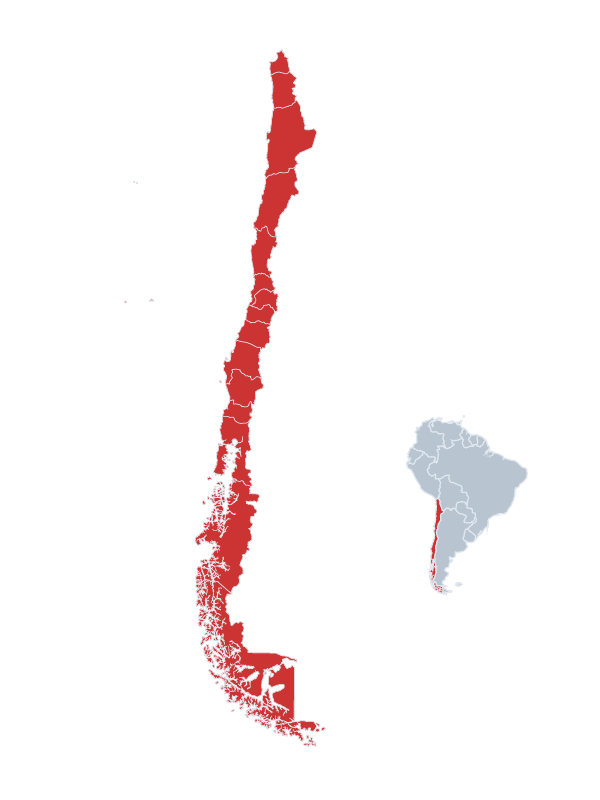Lakes & Volcanoes: Landscapes to Remember
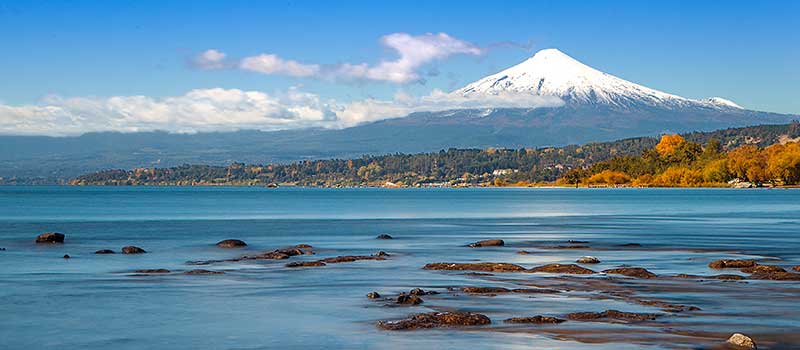
Spectacular scenery of deep blue mountain lakes, snow-capped volcanoes, lush forests and mystical legends. Some of the places to be visited are Puerto Varas, Puerto Montt, Frutillar, Osorno volcano and Perez Rosales National Park. Puerto Varas, german-flavored charm on Lake Llanquihue with splendid views of snow-topped volcanoes. This area also offers relaxation on the beaches of Lake Villarrica and countless options for outdoor sports and excursions amidst gorgeous natural scenery.
In this region it is also possible to visit the Chiloé archipielago, with its colorful painted stilt-houses, unique wood churches, original traditions, myths, and legends, and lush green landscapes.
What can we do there?
-
City of Puerto Montt
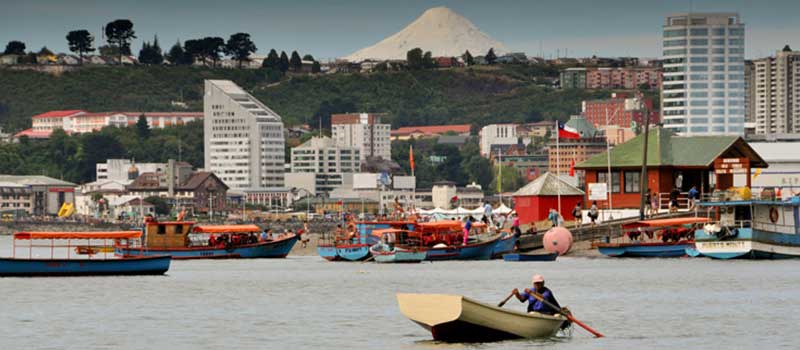
Duration: Half Day
Panoramic view of the city from the Manuel Montt lookout point. Plaza de Armas with its church, waterfront promenade of Costanera Avenue, Monument to the German colonizers, Jesuit Church, its Bell Tower, declared a National Monument, Cathedral Church, city oldest building. Port area of Chinquihue, overlooking the Pacific Ocean, Angelmó fish and seafood market *Monday to Sunday from 1000 to 2000 hours), with its picturesque craft fair with products of the Seno de Reloncaví and Chiloé archipelago (*Monday to Sunday from 0900 to 1900 hours.
-
City of Puerto Varas
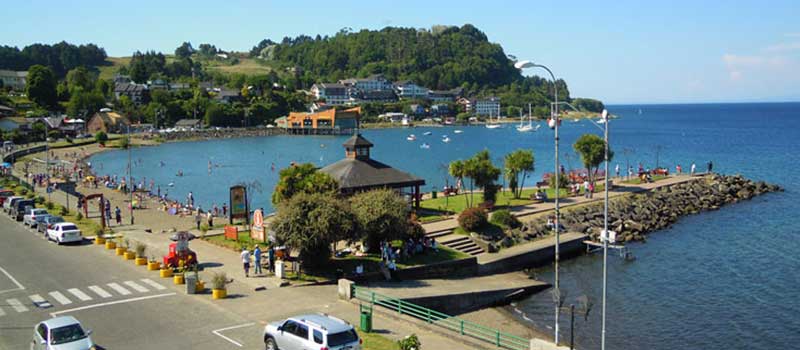
Located opposite to the Llanquihue Lake, third largest on the continent, Church of the Sacred Heart of Jesus (1915-1918 Baroque style), declared National Monument in 1992. Vicente Pérez Rosales square, Municipal Casino, residential neighborhoods with their heritage houses built in larch wood, (1910-941), some declared National Monument in 1992. Costanera Avenue bordering the lake towards the Philippi Park, ancient forest reserve with a viewpoint for a panoramic of the city, the lake and volcanoes.
-
Petrohué Waterfalls & Osorno Volcano
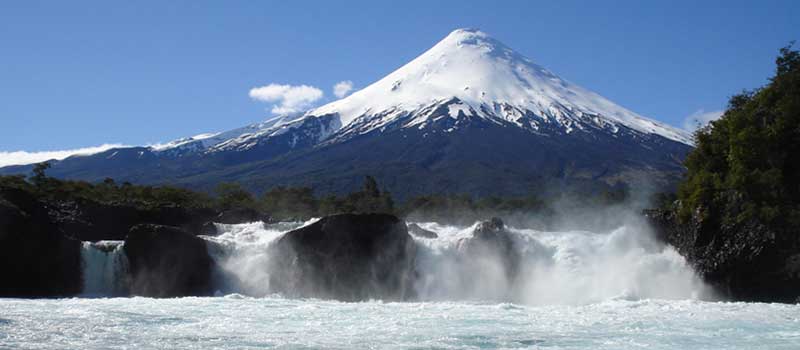
Departure for this full day tour into the wonderful region surrounding Puerto Varas is after breakfast, and wonderful views towards the Osorno and Calbuco volcanoes can already be enjoyed during the drive along Lake Llanquihue. First stop of the day is by the wild ‘Saltos de Petrohue’, a collection of rapids and waterfalls that dance over the impressive formations of lava rocks from the surrounding volcanoes. It is the waters of the Petrohue River itself that have eroded and shaped these rocks over a period of thousands of years. The journey continues with a drive up the Osorno volcano (2,660m/8,727ft). The road ends at an elevation of 1,200m/3940ft, by a mountain cabin, where the unforgettable views range from the mighty towering heights of the Osorno volcano and the neighboring volcanoes of Calbuco, Antillanca, Tronador, to the profoundly blue Llanquihue Lake. A hike across the volcano’s immense lava fields is made, and the panoramic views improve with every foot of elevation gained. By good weather, you can also enjoy the landscape during a ride by chairlift (optional). The return journey to Puerto Varas is in the afternoon.
-
Frutillar
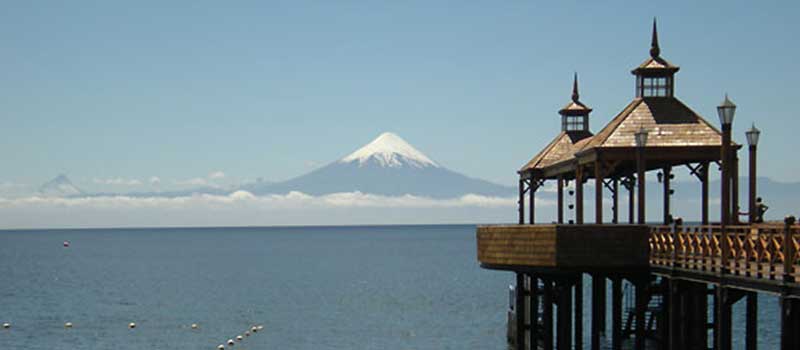
Bordering Lake Llanquihue arrive at the city of Frutillar, founded in 1856 as a port of embarkation for the German settlers who came to the area. On the way, you will have the chance to appreciate companies devoted to the cultivation of salmon, first in importance within the seafood exports. Frutillar maintains the architecture, gastronomy and customs of Germany. The city has experienced a strong tourism rebound in the last two decades thanks to the effort and ingenuity of its inhabitants who have refurbished traditional buildings enabling a beautiful waterfront with spectacular gardens. German Colonial Museum, four buildings illustrating the lifestyle of settlers from 1880 to 1920. Teatro Del Lago is one of the emblematic works of the city, built with high-tech acoustics and modern architecture. It hosts the “Frutillar Musical Weeks” also concerts, plays, ballet and cinema throughout the year. This theatre is today the largest in Southamerica, amidst the Frutillar bay, on the shores of Lake Llanquihue and overlooking the Osorno, Puntiagudo and Calbuco volcanoes.
-
Around the Llanquihue Lake
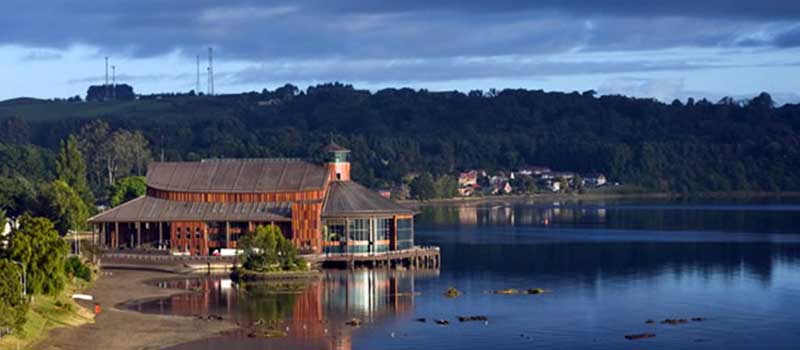
Drive northward along the Panamericana Route, with view on the majestic Osorno volcano, until reaching the town of Llanquihue. From this point, continue bordering the lake passing by well-tailored fields sown with regional products and salmon production centers up to Frutillar, a corner of Germany in the South of Chile. Proceed northeast as Puerto Octay appears in the far distance, settled in the middle of a bay protected by the Centinela peninsula. Near the foothills of the Osorno volcano, pass by Villa La Cascada, always with a view on the lake, as you start your way up the majestic Osorno volcano.
-
Andean Crossing
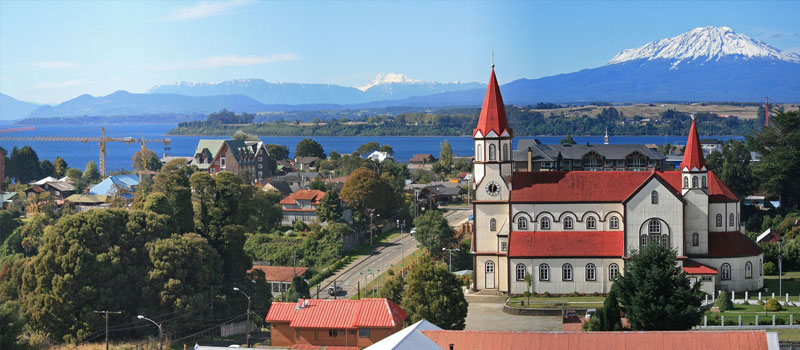
1 DAY: PUERTO VARAS (Chile) to BARILOCHE (Argentina) FAST BUS/BOAT COMBINATION
Departure in the morning (around 8am) by bus from Puerto Varas skirting lake Llanquihue 76km. (2 hrs.) up to Petrohué. Board catamaran to sail Todos los Santos Lake to Peulla, 20mi (1h40 min.) Arrival at Peulla. After lunch time (not included), departure by bus to Puerto Frías 27km. (2h). * Police and Custom formalities.
Sail Lake Frías to Puerto Alegre 4mi. (20 min.) Proceed by bus to Puerto Blest 3km. (15 min.) Board catamaran to sail Lake Nahuel Huapi to Puerto Pañuelo 15mi. (1.05 min.) From Puerto Pañuelo proceed by bus to Bariloche 25km. (30 min.). Arrival Bariloche approx. 20h45m.
Operation: All year around. Daily frequency.
-
Andean Crossing 2
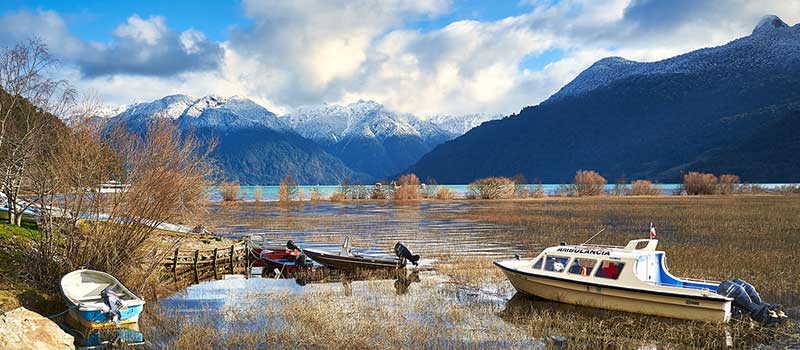
2 DAYS/ 1 NIGHT: PUERTO VARAS- PEULLA - BARILOCHE NORMAL BUS/BOAT COMBINATION
Day 1 Puerto Montt o Puerto Varas – Petrohué – Peulla AM - Departure by bus from Puerto Montt or Puerto Varas skirting Lake Llanquihue 76km. (2 hrs.) up to Petrohué. Board catamaran to sail Lake Todos los Santos to Peulla, 20mi (1h40 min.) Arrival at Peulla. Transfer to your hotel. *Lunch on passengers account. Overnight. (B)
Day 2 Peulla – Bariloche (Argentina) AM - Departure by bus to Puerto Frías 27km. (2h). * Police and Custom formalities. Sail Lake Frías to Puerto Alegre 4mi. (20min.) Proceed by bus to Puerto Blest 3km. (15min.) Board catamaran to sail Lake Nahuel Huapi to Puerto Pañuelo 15mi. (1.05 min.) From Puerto Pañuelo proceed by bus to Bariloche 25km. (30min.) (B) Operation: All year around. Daily frequency
-
Temuco
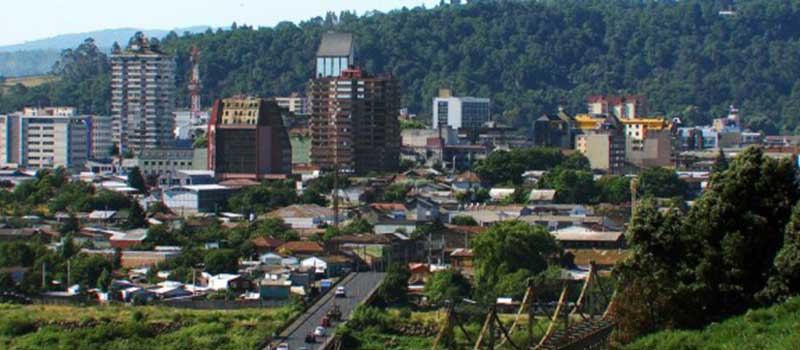
Capital of the Araucania Region, founded in 1881, located 619 km south of Santiago. Most importantly, Temuco is the territorial heart of the libertarian mapuche people. The Spanish called araucanos the inhabitants of this area. However, Indians called themselves mapuches (man of the Earth), and mapudungun (language of the Earth), their language. Tourists arrive in large numbers to this area because of its unique landscape. In the Andean-lakeside area, ski centers, hot springs, cities of Villarrica and Pucón, beautiful Conquillio, Villarrica and Huerquehue National Parks and in the Araucania coastal area, the mapuche ethnic tourism.
-
Pucón
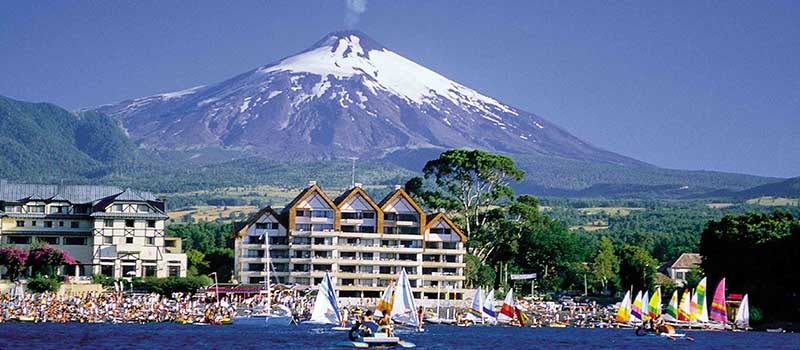
Its environment has a variety of tourist attractions; hot springs, ski centers, national parks, beautiful always snow-covered volcanic cones, conifer forests, rushing rivers, waterfalls, cascades and rapids. Pucón is the city with the highest rate of constructions mainly holiday homes, cottages and hotels, with the architectural style of the Andean-Patagonia, which later expanded to cities as San Martín de los Andes and San Carlos de Bariloche in Argentina.
-
Villarrica National Park
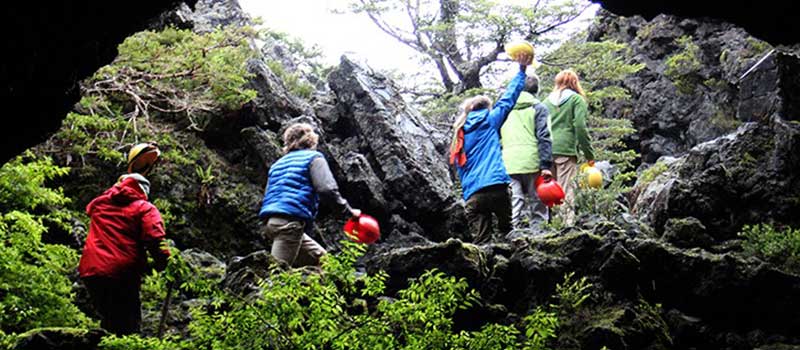
It is located 12 km southeast of Pucón in an area of large volcanoes and mountains that reach 3,776 m in an area of 63,000 hectares. It is part of the Biosphere Reserve for Temperate Rainy Forests of the Andes Australes. The Park has a ski center and an area for camping in summer. Other activities include the visit to the crater and volcanic caves. Within the park are the Villarrica (2,847 m), Quetrupillán (2,360 m) and Lanin (3,776 m) volcanoes in addition to the Quillelhue, Blanca, Azul, Huinfiuca, Avutardas and Los Patos lagoons. The vegetation includes mountain species as the araucaria, raulí lenga and coigüe and the fauna includes the monito del monte (marsupial), pumas and foxes (mammals), eagles and falcons (birds of prey), huala, tagua, ducks (waterfowl). The National Park is part of a bi-national initiative to create a corridor for the protection of the environment between Chile and Argentina. *From Temuco 116 km * From Pucón 12.9 km
-
Malalcahuello Thermal Resort & Spa
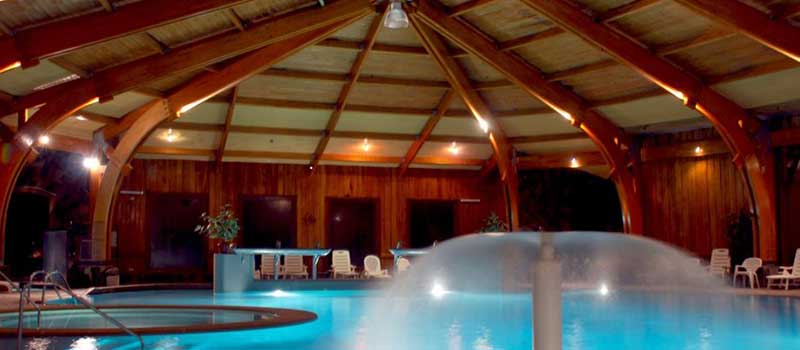
Surrounded by millennia araucarias, located 120 km from the city of Temuco. In 2003, the Chile Ministry of Health declared the waters of the Center as “source of healing waters”. Native people knew the healing powers in ancient times. The waters are of medium mineralization and contain iron, sulfur, manganese, magnesium and potassium, among other minerals.
The hotel has an area of 1,500 m2 and has 27 guest rooms, suites and apartments. Thermal Spa and fully heated covered swimming pool in an area of 1,300m2. Outdoor pool (in season). Relaxation massage areas. Sauna. Hydro-massage pool.
Swimming against the tide with temperatures between 37 and 38 degrees. Jacuzzi to 41 degrees. Two smaller pools 7°C and 43°C respectively. Guests can also enjoy horseback riding excursions, or visit the Malalcahuello Reserve, located just 20 minutes away. *Daily flights from Santiago to Temuco (55 min)
-
Chiloé Archipielago: Castro & Dalcahue
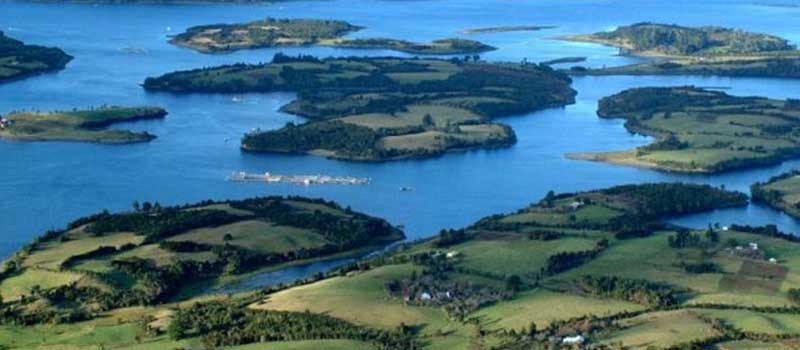
This day trip begins early in the morning, setting off south, towards Pargua, where the car ferry crosses to Chiloé – an island full of myths, legends and very special people. After your arrival on the island you will first go to Castro, the island’s capital, where you will visit the Plaza de Armas and its cathedral painted in daring lilac and orange. The island’s largest craft market can also be visited near the harbour. Castro is famous for its ‘palafitos’, houses raised on stilts above the water. There are various reasons for their existence, but the most compelling is perhaps the simple fact that early inhabitants sought to evade taxes by building over the water. After all, the ocean has always belonged to everyone!
Afterwards you will continue to the fishing village of Dalcahue, where there is time for a stroll. Traders on the Sunday market offer native craftwork to the visitors, while the locals (Chilotes) shop their fruit and vegetables next door. Dalcahue is the regional center for many smaller islands and fishing villages along the coast and provides good insight into the traditional way of life on Chiloé. It has photogenic clapboard houses and colorful fishing boats that bring in fresh catches of crab.
The return journey to Puerto Varas is in the late afternoon.
-
The Penguins Of Puñihuil
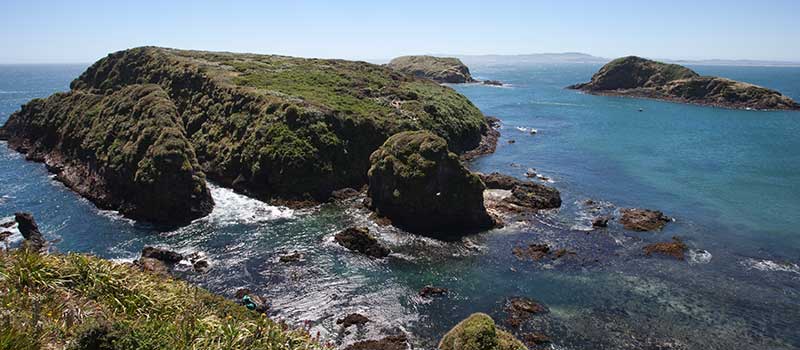
This day trip begins early in the morning at the hotel in Puerto Varas, setting off south, towards Pargua, where the car ferry crosses to Chiloé – an island full of myths, legends and very special people. The first stop on the island is the Bay of Caulín, where black-necked swans and other bird species can be observed during summer. Next is Ancud, the northern-most town and former capital of the island, where you get a brief insight into the lifestyle of the island’s inhabitants, known as ‘Chilotes’ in Chile. You will also see the colorful shingle houses on stilts, typical for the island, as well as fishing boats, the harbour, and the market. Fortifications dating back to the era of the War of Independence are also visited in Ancud.
Afterwards, the journey continues along the northern coast of Chiloé, before reaching Puñihuil. Weather permitting; you will take a small boat to one of the rocky outcrops in the sea, where the penguins nest during the breading season. It is one of the few places where Magellan and Humboldt penguins live side by side. The return journey to Puerto Varas is in the evening.


